An essential class in Stanier’s Locomotive Policy for the London, Midland and Scottish Railway (LMS), the 8F would later become the standard freight engine during War World 2 (WW2).
After reviewing the working life of the class, we will then explore the preservation of the 15 locomotives which survive today.
LMS Stanier 8Fs
The LMS Locomotive Policy introduced in 1925 by Chief Mechanical Engineer (CME) Fowler followed closely to the Ex-Midland Railway policy of small engines.
This policy soon became unsuitable for the largest company of the ‘Big Four’, creating a difficult challenge for Stanier on his 1932 appointment as CME of the LMS.
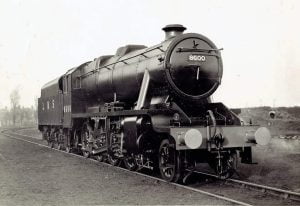
Design
The five year period before Stanier joined the LMS saw two heavy freight classes developed and entering traffic. Both sizeable locomotives but the Midland Railway designs, such as small axleboxes, made them unpractical for many freight trains handled by the LMS. To build a class capable of fulfilling the current and future of the company, Stanier and his department set about designing what would become the Stanier 8F class.
Boiler designed followed along Great Western Railway lines, with the 8Fs being fitted with the Stanier Class 3C boiler, featuring a Belpaire firebox and Tapered boiler barrel. Two 18 1/2in diameter and 28 stroke outside cylinders ensured low maintenance costs and relatively simple layout; the same cylinders size were used on LMS ‘Black 5s’.
The basic dimensions and features of the 8F class include 2-8-0 wheel arrangement (coupled wheels – 4 foot (ft) 8 1/2 inch (in), leading truck – 3ft 3 1/2 in), Stanier Class 3C type boiler pressed at 225 lbf/in2, Two outside cylinders (18 1/2 in diameter and 28in stroke), total weight came in at 72.10 long tons (engine only) and a tractive effort of 32,440lb (BR 8F).
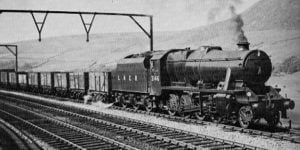
Construction
Like many locomotives, the 8Fs were initially built for use on the LMS, but on the start of World War 2, the War Department (WD) selected the 8F as the UK’s standard freight engines. This saw both all the ‘Big Four’ and private contractors construct the 8Fs. Between 1935 to 1946 852 engines were built, making them one of the UK’s most numerous tender locomotives. Below is the list showing production dates, builder, quantity and numbers of the batches built.
- 1935 to 1944 LMS Crewe Works (LMS Order)- 137 built (LMS no. 8000 to 8026, 8096 to 8175 and 8301 to 8330)
- 1936 to 1937 Vulcan Foundry (LMS Order) – 69 built (LMS no. 8027 to 8095)
- 1940 to 1942 North British Locomotive Co. (WD Order) – 158 built (WD no. 300 to 399, 500 to 524, 540 to 571, 623)
- 1940 to 1942 Beyer, Peacock & Co. (WD Order) – 50 built (WD no. 400 to 449)
- 1942 North British Locomotive Co. (LMS Order) – 50 built (LMS no. 8176 to 8225)
- 1943 to 45 LMS Horwich Works (LMS Order) – 75 built (LMS no. 8331 to 8399 and 8490 to 8495)
- 1943 to 1945 GWR Swindon Works (Railway Executive Committee (REC) Order) – 80 built (LMS no. 8400 to 8479)
- 1943 to 1944 SR Eastleigh Works (REC Order) – 23 built (LMS no. 8600 to 8609 and 8650 to 8662)
- 1943 to 1944 SR Ashford Works (REC Order) – 14 built (LMS no. 8610 to 8612, 8618 to 8624 and 8671 to 8674)
- 1943 to 1944 SR Brighton Works (REC Order) – 68 built (LMS no. 8613 to 8617, 8625 to 8649, 8663 to 8670 and 8675 to 8704)
- 1944 to 1945 LNER Darlington Works (REC Order) – 30 built (LMS no. 8500 to 8509 and 8540 to 8559)
- 1944 to 1945 LNER Doncaster Works (REC Order) – 30 built (LMS no. 8510 to 8539)
- 1944 SR Brighton Works (LNER Order) – 25 built (LNER no. LNER 7651 to 7675, later LMS no. 8705 to 8729)
- 1945 to 1946 LNER Darlington Works (LNER Order) – 23 built (LNER no. 3125 to 3147, later LMS no. 8730 to 8752)
- 1945 to 1946 LNER Doncaster Works (LNER Order) – 20 built (LNER no. 3148–3167, later LMS 8753 to 8772)

TCDD 45151 // Credit Unknown
Performance in Service
Soon after introduction, the 8Fs soon showed footplate crews that they were capable machines. Apart from adapting how the engines performed (for example, less effective brakes than the 7Fs) and minor issues being addressed when withdrawn from traffic for repairs, no significant defects were found. When booked to haul passenger trains, the 8Fs could be seen hauling trains up to 60mph all down to the free-running developed in the front end design, despite their small coupled wheels.
Once numbers built up, they soon spread across the LMS system to replace the small fleet of freight locomotives. The impressive performance and relatively inexpensive maintenance saw the LMS 8Fs selected to be the War Department’s (WD) standard freight engine for the Allies in Europe. Several changes were made for the WD engines, from reducing the number of specialised metals to fitting equipment to run over other nations tracks.
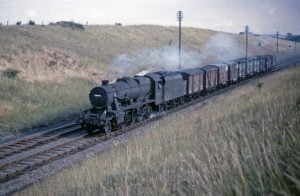
On home soil during World War 2, the Stanier 8Fs were built across the ‘Big Four’ and were allocated to the Great Western Railway and London and North Eastern Railway. Overseas, the 8Fs operated in Italy, Egypt, Iran, Iraq, Turkey, Palestine and Israel both during and after the war. Many engines saw service across a variety of these countries under different ownership, with some engines spent the rest of their working lives aboard while others returned home.
Under BR ownership, which by 1957 included 666 engines, the 8Fs were mostly allocated to the London Midland Region (LMR). The WD 2-8-0s and 2-10-0s handled majority freight traffic for the Scottish Region.
Decline and Withdrawal
In the 11 years between 1935 and 1956 across 10 Locomotive Works, 852 engines of the Stanier 8Fs were built. Almost 200 never returned to the UK after the war due to either being destroyed beyond use or used for hauling trains aboard. Withdrawals started fully in 1964, with only one engine withdrawn before this date in 1960. Even in the last year of steam on BR, 1968, 150 were still in service on the LMR.
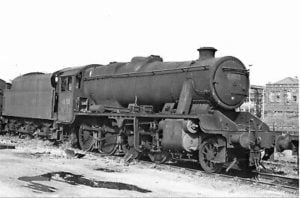
Preservation
Of the 852 built, eight locomotives survive today in the UK. A ninth engine, BR No.48518 was brought by Barry Scrapyard, becoming one of the ‘Barry Ten’. 48518 was later broken up for parts for new-builds LMS ‘Patriot’ Class No.5551 “The Unknown Warrior” and GWR Hawksworth ‘County’ Class 4-6-0 No.1014 “County of Glamorgan”. Another six engines are known to survive in Turkey and Iraq, with three display in Turkey, two ‘dumped’ in Turkey and one ‘dumped’ in Iraq. Two 8Fs can also be seen underwater after they went down with SS Thistlegorm.
Of these 15 engines, we look at the preservation history of the eight that remain today.
-
- 48151 – Built in September 1942 at Crewe Works for use on the LMS, withdrawn and transported to Barry Scrapyard in 1968. Purchased in November 1975, restoration was started at the Embsay and Bolton Abbey Railway and completed at Steamtown Carnforth in 1988. Since then, under David Smith’s ownership, 48151 has mainly hauled mainline steam tours for West Coast Railways, visiting old stomping grounds from BR days of Liverpool to new places such as Blaenau Ffestiniog. Only two Heritage Line visits have been made, to the Great Central Railway (GCR) in 2000 and Mid Norfolk Railway (MNR) in 2014. In 2019 48151’s mainline boiler ticket expired, with the engine now withdrawn from traffic for overhaul.
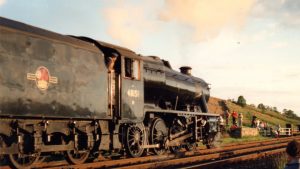
Credit: RailAdvent - 48173 – Built in June 1943 at Crewe Works for use on the LMS, withdrawn and sold in 1965 to the Woodham Brothers based in Barry Island, Wales. Purchased by the Avon Valley Railway and moving to the line in 1988 and was stored pending restoration. 48173 changed ownership in 2007, being brought by one of the Churnet Valley Railway‘s (CVR) Directors. Following the overhauls of resident USATC S160s, restoration started in 2017.
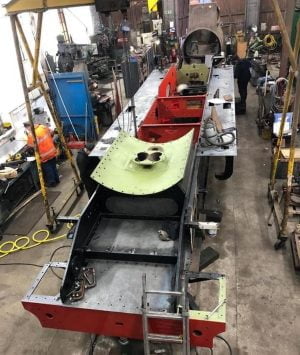
The frame of 48173 // Credit Batt Holden Ltd - 48773 – Built in August 1940 by North British Locomotive Company for WD use, 48773 spent nine years abroad before returning home, being withdrawn and sold straight into preservation in 1968 to The Stanier 8F Locomotive Society Ltd, based at the SVR. Following restoration, 48773 became a regular runner at SVR but has also hauled 17 mainline tours and has visited other preserved railways such as the Keighley & Worth Valley Railway (KWVR) and West Somerset Railway (WSR). The last steaming on the 13th of January 2008, 48773 is currently on display at SVR’s Engine House. Initial assessments have shown the next overhaul will require many significant repairs, including new tyres, right-hand cylinder, tender tank and substantial boiler repairs. For more information or to support The Stanier 8F Locomotive Society Ltd, please visit their website here.
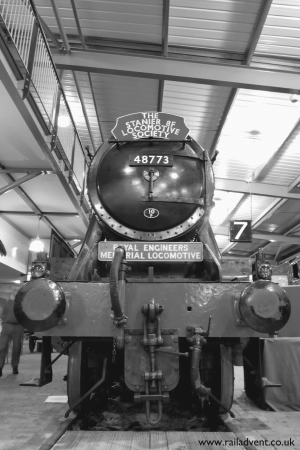
48773 at the Engine House, SVR // Credit Michael Holden, RailAdvent - 48305 – Built in November 1943 by Crewe Works for use on LMS, 48305 was withdrawn in January 1968 and entered Barry Scrapyard in September 1968. Purchased by a private owner in 1985 for restoration at GCR, 48305 steamed for the first time in preservation in February 1995. The engine moved between a few lines before returning to GCR and withdrawn in 2011 for overhaul. 48305 returned to traffic in 2019 appearing in BR Unlined Black with Early Crest on tender sides, with the current boiler ticket expiring in 2029.
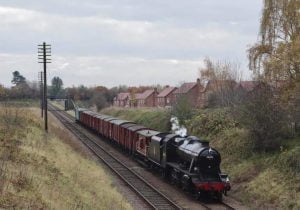
48305 at GCR // Credit Cameron White - 48431 – Built in March 1944 by Swindon Works for use on GWR, 48431 was withdrawn May 1964, arriving at Barry Scrapyard in August the same year. In May 1972 the KWVR purchased 48431 for restoration which was completed by December 1975. On its first ticket, the locomotive operated mostly on the KWVR. Today 48431 can be found at KWVR’s Oxenhope Exhibition shed as a static display.
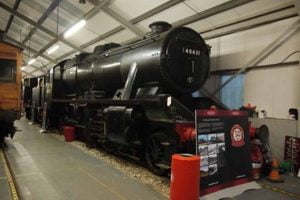
48431 // Credit Sam Steventon - 48624 – Built in December 1943 by Ashford Works for use on LMS, 48624 was withdrawn due to needing repairs in 1965, arriving at Barry Scrapyard in October the same year. Just over 17 years past before 48624 left Barry for restoration at Peak Rail. Completed in May 2009, the engine stayed at the line for two years before moving to GCR in 2011. The locomotive first appeared in BR Crimson livery, a non-authentic livery, being replaced by BR Black later on. A boiler ticket extension was granted in 2018, with the end of July 2019 seeing 48624 withdrawn from traffic.
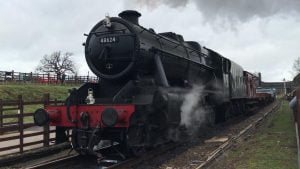
Credit: RailView - 8274 – Built in 1940 by North British Locomotive Company for WD use, with 8274 being sent to Turkey for TCDD use. Number TCDD No.45160, the engine was in operational until 1983. In 1989, 8274 was purchased by the Churchill 8F Locomotive Company and returned to the UK. Following restoration, initially appearing in TCDD No.45160, 8274 visited a few railways, spending most of its boiler ticket at the Great Central Railway Nottingham. 8274 is currently out of traffic awaiting overhaul.
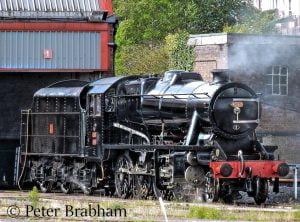
45160 at Barry Waterfront Festival September 2011 // Credit Peter Brabham - 45170 – Built in Early 1942 by North British Locomotive Company for WD use, seeing 45170 shipped to Turkey for TCDD use. The engine did not return following the end of World War 2, remaining in service for the TCDD. In December 2010 45170 was repatriated back to the UK by the Scottish Railway Preservation Society, who have started restoration work. More more information or to support 45170’s restoration, please click here.
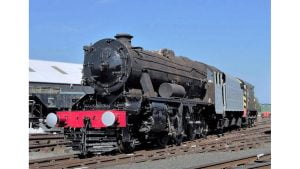
Credit: The 45170 Appeal via the BT MyDonate Page
- 48151 – Built in September 1942 at Crewe Works for use on the LMS, withdrawn and transported to Barry Scrapyard in 1968. Purchased in November 1975, restoration was started at the Embsay and Bolton Abbey Railway and completed at Steamtown Carnforth in 1988. Since then, under David Smith’s ownership, 48151 has mainly hauled mainline steam tours for West Coast Railways, visiting old stomping grounds from BR days of Liverpool to new places such as Blaenau Ffestiniog. Only two Heritage Line visits have been made, to the Great Central Railway (GCR) in 2000 and Mid Norfolk Railway (MNR) in 2014. In 2019 48151’s mainline boiler ticket expired, with the engine now withdrawn from traffic for overhaul.
We hope you have enjoyed this week’s Class Information on the Stanier 8Fs. Over the next few weeks, we will release the next Sole Survive, based on a Great North Railway / London and North Eastern Railway class.
Where Next?
News Homepage
For the Latest Railway News
RailAdvent Online Shop
Framed Prints, DVD’s / Blu-Ray’s and more
LocoStop Community
Come and share your railway pictures
Mainline Steam Info
Upcoming mainline steam tours/loco movements


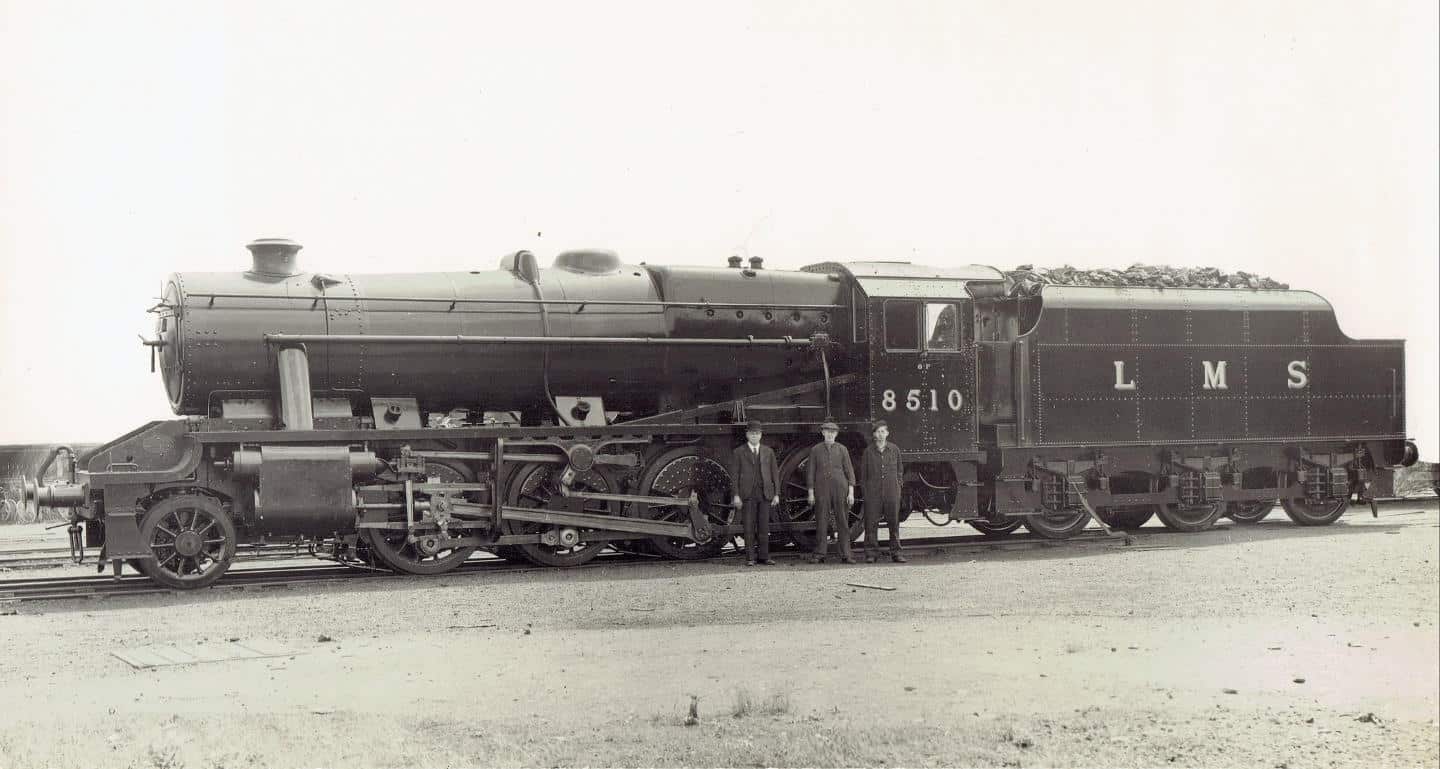



Responses